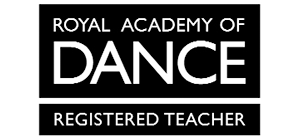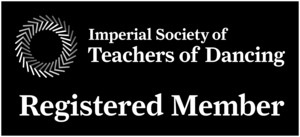Week 3 update and this week’s challenge – Musical Theatre
We are moving into week 3 and I hope you are all continuing to remain safe and well.
Thank you to all those students who created such great choreography again this week in response to the ’Tap challenge’.
I hope you had fun in creating your pieces. I was impressed by how you managed to adapt to the space and the restrictions of having to tap on a piece of wood, or perform on your patio & kitchens showed true commitment to your work. The use of various props was very clever and I have found it hard to judge as they were all different and equally creative.
The joint Junior winners this week are Orla Hastings and Ethan Soule who both integrated their props and tap rhythms with skill & creative thinking. The winner of the Senior age group is Sophia Soule who incorporated her cap into her tap choreography and showed a thorough understanding of the musicality required for the track which was challenging in itself!
Well done to all of you!
Please collect your Chocolate eggs from the farm from Wednesday onwards.
We’d like to see more videos, photos & stories from our students so please keep in touch & forward onto us. We do miss our ‘Tozer family’.
The challenge for this week and next is a Musical Theatre themed challenge (you have two weeks to complete this – submit work by the end of Saturday 18th April).Please follow the instructions below carefully and submit your visual or voice recordings as before. Please get in touch if you need help submitting your work. Chocolate eggs for the winners!
Until our next update. Be safe, stay home & keep well.
Miss Haynes and all the staff
Sarah’s Week 3 challenge – Musical Theatre
1. Watch one of the following musicals that you have not seen before:
- The Sound of Music
- Chitty Chitty Bang Bang
- Disney’s Tangled
Things to consider:
- how accurate can you be with your notes?
- how much expression and meaning can you put into the words?
- find out what ‘legato’ means and see how legato you can make your sound
1. Watch one of the following musicals you have not seen before:
- West Side Story
- Fiddler on the Roof
- Cabaret
You can click here to hear this in a higher key and here, to hear the lower key – although feel free to use one of your own- or even a cappella.
Remember, this beautifully composed nursery rhyme is challenging by its simplicity. So…
Things to consider:
- Decide what kind of style you would like to sing it in: blues, legit, classical, MT, other…
- Think about the differences between a live performance and a recorded performance. How will you express yourself when we can’t see you?
- Consider the phrase ‘being in the text’. How colourfully can you paint these sweet legato phrases?
I feel very lucky to have grown up with opera and classical singing. I often feel like a solid foundation in the basics of classical singing is missing for some of my students. I regularly say it’s the “ballet” of technical singing.
So while we’re all stuck inside, what better way to introduce you to some of the more masterful examples of classical singing? I’ve included links to what I consider “masterclasses” in technique. I’ve tried to pick each recording for a specific and relevant reason.
1. Agnes Baltsa – Non Piu Mesta from Rossini’s La Cenerentola (Cinderella)
https://youtu.be/I9rd4T2OuWY
Give her a chance to really get going at around 1.15. Baltsa is a shining example of coloratura singing. Notice how little she needs to engage her face and mouth to make her voice move so quickly and so accurately? That’s incredible technique and so exciting to watch.
2.Luciano Pavarotti – Caro Mio Ben
https://youtu.be/iQ_xRL3uxTA
The undisputed king of Bel Canto. I know many of you will have already seen this. But even so, it’s good to be reminded of that breathing technique! Watch his belly as he releases and inhales. It’s so low and deep that he leaves his vocal structure completely free of tension, giving us long, beautiful lines of legato singing.
3. Jussi Björling and Robert Merrill – Pearl Fishers Duet
https://youtu.be/5PYt2HlBuyI
This recording has gone down in history as being one of the best examples duet singing. Recently we spoke about “resonating” sound when singing together. Listen to how these two very different voices manage to blend and never overpower each other.
4. Maria Callas – La Mama Morta from Giordano’s Andrea Chénier
https://youtu.be/xXzeEfH6PTk
Within the opera world Maria Callas is considered to be the most famous female singer. She had a very unique voice and an incomparable depth of emotion that can easily be heard without watching her. This recording really demonstrates her use of colour and texture. Even though it’s in another language, the pain, fear and longing in her sound is unmistakably moving. This shows how much one can paint the singing voice without compromising technique.
5. Lucia Popp – Der Holle Rache from Mozart’s Di Zauberflöte (The Magic Flute)
https://youtu.be/pDUyA-fVie8
When people think of opera they often think of high notes so to finish off I thought I’d give you probably one of the most well known examples of this. In my opinion no one compares to Popp. She just made it sound so easy! This is an awesome example of what the human voice can do when it’s properly trained.
Every morning you greet me
Clean and bright
You look happy to meet me
May you bloom and grow
Bloom and grow forever
Bless my home-land forever
Clean and bright
You look happy to meet me
May you bloom and grow
Bloom and grow forever
Bless my home-land forever


